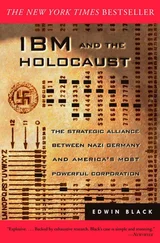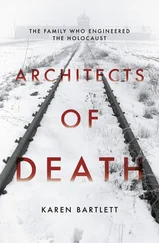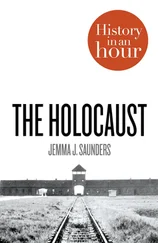Doenecke, Not to the Swift, p. 215.
Utley, High Cost of Vengeance, p. 14 (italics added).
Ibid., pp. 14, 15.
She included in these crimes “the obliteration bombing; the mass expropriation and expulsion from their homes of twelve million Germans on account of their race; the starving of the Germans during the first years of the occupation; the use of prisoners as slave laborers; the Russian concentration camps, and the looting perpetrated by Americans as well as Russians” (Utley, High Cost of Vengeance, p. 183).
“Slaveholders Always Defend Slavery,” Chicago Tribune, December 10, 1946.
Karl Brandt, “Germany Is Our Problem,” pamphlet (Hinsdale, Ill., 1946).
Chicago Tribune, July 26, 1945; Charles A. Beard to Oswald Garrison Villard, November 8, 1946, Villard Papers, cited in Doenecke, Not to the Swift, pp. 140, 141, 149 n. 43.
“The Nazi Trials,” editorial, Chicago Tribune, July 24, 1945.
Congressional Record, 82nd Cong., 2nd Sess., Mar. 11, 1952, pp. 2106, 2110, cited in Shapiro, “Antisemitism Mississippi Style,” p. 136.
Frank C. Waldrop, McCormick of Chicago (Englewood, N.J., 1966), p. 263. For additional background information on the foreign policy of the Chicago Tribune in the interwar period see Jerome Edwards, The Foreign Policy of Colonel McCormick’s Tribune, 1921–1941 (Reno, 1971).
New York Daily News, October 6, 1945.
Nation, May 19, 1945, p. 579.
Progressive, May 14, 1945, cited in Robert Abzug, Inside the Vicious Heart (New York, 1985), pp. 136–37.
General doubts about the reports of mass murder and other atrocities committed by the Germans had persisted as late as the liberation of the camps. In April 1945 the BBC had chosen not to broadcast its own reporter’s account of the liberation of Buchenwald because it feared the public would not believe him. It waited a number of days until it received Edward R. Murrow’s account. Because Murrow was held in such high esteem by the British, the BBC was convinced that his description of the horrors perpetrated by the Germans would be more likely to be accepted as accurate. Even Murrow worried that his report would be dismissed as exaggerated, and in his famous broadcast he asked his listeners, “I pray you to believe what I have said.”
William Hesseltine, “Atrocities Then and Now,” Progressive, May 9, 1945, p. 4.
App, A Striaght Look, p. 5.
Mark Weber, “Civil War Concentration Camps,” Journal of Historical Review (Summer 1981), pp. 144, 150–52.
C. C. Aronsfeld, The Text of the Holocaust (Marblehead, Mass., 1985), p. 52.
Ibid., p. 55. Grabert published David Hoggan’s The Forced War, which would play a seminal role in the evolution of Holocaust denial in the United States and Germany.
Welt der Arbeit, May 26, 1961, cited in Aronsfeld, Text of the Holocaust, p. 56.
Deutsche Hochschullehrer-Zeitung (Tübingen), no. 4 (1963), quoted in Aronsfeld, Text of the Holocaust, p. 56.
Nadine Fresco, “The Denial of the Dead: On the Faurisson Affair,” Dissent (Fall 1981), pp. 473–74.
Maurice Bardèche, Nuremberg ou la Terre Promise (Paris, 1948) cited in Gill Seidel, The Holocaust Denial: Antisemitism, Racism and the New Right (Leeds, England, 1986), p. 95.
Ian Barnes, “Revisionism and the Right,” A Contemporary Affairs Briefing of the Centre for Contemporary Studies (reprinted in the Glasgow Jewish Echo, Jan. 8, 1982, p. 6).
Pierre Hofstetter, Introduction to Paul Rassinier, Debunking the Genocide Myth: A Study of the Nazi Concentration Camps and the Alleged Extermination of European Jewry (Torrance, Calif., 1978), p. x. (hereafter cited as Debunking).
Ibid., p. x.
Ibid., p. 164.
Ibid., p. 35.
Ibid.
Ibid., p. 37.
Ibid., p. 36.
Ibid., p. 185.
Ibid., pp. 53, 55.
Ibid., p. 216.
Ibid.
Ibid., pp. 218–19.
Ibid., p. 219.
Ibid., p. 214.
Paul Rassinier, The Real Eichmann Trial, or The Incorrigible Victors (Silver Spring, Md., n.d.), p. 47.
Debunking, p. 214.
Ibid.
Ministry of Foreign Affairs, Israel, Documents Relating to the Agreement Between the Government of Israel and the Government of the Federal Republic of Germany (Jerusalem: 1953), pp. 9–91. On March 14, 1951, Foreign Minister Moshe Sharett declared in a statement to the Knesset that “the demand for reparation has been calculated according to the burden that the people in Israel and Jewish organizations throughout the world have taken upon themselves in financing the rehabilitation and the absorption of a half a million survivors of the Holocaust who have settled or will settle in Israel.” Nana Sagi, German Reparations: A History of the Negotiations (Jerusalem, 1980), p. 55.
Debunking, p. 219.
Raul Hilberg, The Destruction of the European Jews (New York, 1967), p. 311; Debunking, p. 219.
Hannah Arendt, “A Reporter at Large: Eichmann in Jerusalem—II,” The New Yorker, Feb. 23, 1963, p. 66.
Debunking, p. 220.
Hilberg, The Destruction of the European Jews, p. 670.
Debunking, p. 219.
Archival collections in the former USSR, which had previously been unavailable to historians, were recently opened for inspection. It is likely that the information they contain may result in a change in the estimate of the number of victims.
Hilberg, The Destruction of the European Jews, p. 257.
Ibid., p. 266.
Debunking, p. 224.
Ibid., p. 288.
“Raphael Lemkin,” Encyclopedia of the Holocaust (New York, 1990), p. 860.
Debunking, p. 289.
Ibid., p. 309.
Читать дальше












